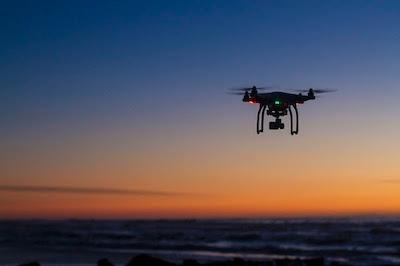Tue, May 21, 2019
Drones May Not Be Flown Closer Than 3,000 Feet Laterally Or 1,000 Feet Above Any Navy Ship
At the request of its federal security partners, the Federal Aviation Administration (FAA) is using its existing authority under Title 14 of the Code of Federal Regulations (14 CFR) § 99.7 – “Special Security Instructions” – to restrict drone operations over select facilities and assets.

The FAA has established special security instructions that restrict drone operations in airspace up to 2,000 feet mean sea level (MSL) near U.S. territorial and navigable waters. These new restrictions specifically prohibit drone flights in this airspace within a stand-off distance of 3,000 feet laterally and 1,000 feet above any U.S. Navy vessel.
UAS operators who violate the flight restrictions may be subject to enforcement action, including potential civil penalties and criminal charges. Violators may also face security enforcement action that results in the interference, disruption, seizure, damaging or destruction of unmanned aircraft considered to pose a safety or security threat to protected U.S. Navy assets.
The restrictions are detailed in Notice to Airmen (NOTAM), and can be found at the UAS Data Display System (UDDS) website. Unmanned Aircraft System (UAS) operators are urged to familiarize themselves with these NOTAMs and to go to UDDS to help them comply with these FAA restrictions, which are put in place to support the nation’s security. UDDS provides precise descriptions of the airspace to which these restrictions are applied, procedures to access this airspace, an interactive map, downloadable geospatial data and other crucial information and tools for UAS operators. A link to these restrictions is also included in the FAA’s B4UFLY mobile app.
The FAA is considering additional requests by eligible federal security agencies for UAS-specific airspace restrictions using the agency’s § 99.7 authority as they are received. Additional changes to these restrictions will be announced by the FAA as appropriate.
UAS operators can find more information on a broader range of issues related to flying drones in the National Airspace System on the FAA’s main UAS website, including answers to frequently asked questions.
(Source: FAA news release. Image from file)
More News
No Gyro Approach A radar approach/vector provided in case of a malfunctioning gyro-compass or directional gyro. Instead of providing the pilot with headings to be flown, the contro>[...]
Aero Linx: European Hang Gliding and Paragliding Union (EHPU) The general aim of the EHPU is to promote and protect hang gliding and paragliding in Europe. In order to achieve this>[...]
Make Sure You NEVER Miss A New Story From Aero-News Network Do you ever feel like you never see posts from a certain person or page on Facebook or Instagram? Here’s how you c>[...]
Also: Duffy Wants $$$, KS Airports, Morningside U’s Aviation School, New Airstrip In ID After 6 were killed in a helicopter crash over the Hudson River, several US Representa>[...]
Also: Hermeus Quarterhorse MK1, Seaplane Rating Guide, Vietjet A330neos, SFO Wacky Weed Bust As the air traffic controller shortage trudges on, the US Department of Transportation >[...]
 ANN's Daily Aero-Term (06.03.25): No Gyro Approach
ANN's Daily Aero-Term (06.03.25): No Gyro Approach ANN's Daily Aero-Linx (06.03.25)
ANN's Daily Aero-Linx (06.03.25) ANN FAQ: Turn On Post Notifications
ANN FAQ: Turn On Post Notifications Airborne 05.30.25: Anti-Helicopter Bill, PW Strike Done, All-Electric Bristell
Airborne 05.30.25: Anti-Helicopter Bill, PW Strike Done, All-Electric Bristell Airborne 05.29.25: ATC Bonu$, VX4 eVTOL Flies, Starship 9 Test
Airborne 05.29.25: ATC Bonu$, VX4 eVTOL Flies, Starship 9 Test



